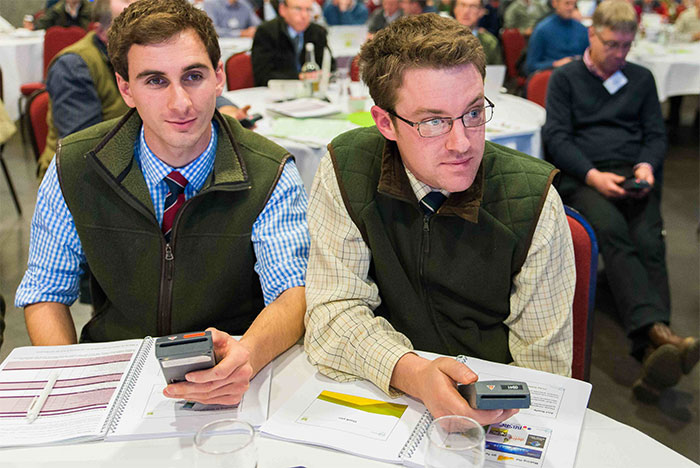
The arable industry must work together more effectively if the UK is to respond to input management challenges, was the clear message to delegates at the 2013 HGCA Agronomists’ Conference.
More than 300 agronomists, growers and other members of the arable industry attended the Conference on 10 December 2013 in Peterborough.
Managing inputs to combat impacts arising from legislative challenges and emerging resistance threats in pests, diseases and weeds was the subject of much discussion.
The event highlighted that the industry needs to work together more effectively to maintain adequate variation in crop protection chemistry and to improve non-chemical approaches to control.

Fungicide performance data from Jonathan Blake, ADAS, and a disease management presentation from John Lucas, Rothamsted Research, revealed the importance of growers deploying chemistry in protectant situations and the use of SDHIs in mixtures and sequences, with azoles and other multisite actives.
Professor Lucas cited the 2012 season as being particularly challenging, as elite triazole compounds struggled to control septoria tritici. Due to complex variations in the sensitivity of local pathogen populations to certain azole fungicides, he said the diversity in this class could be better harnessed to slow the development of resistance.
Investment in the development of varieties carrying durable field resistance was also seen to make long-term strategic sense. However, there was concern about low resistance ratings for some diseases in Recommended List (RL) varieties. For example, over 50% of RL wheat varieties rate 5 or less for brown rust. In a high pressure year, delegates were warned this could place unwelcome stress on chemistry as SDHIs were reported to be only partially effective in France. The industry was urged not to rely too much on SDHIs for brown rust control.
With neonicotinoid restrictions now in place, Steve Foster, Rothamsted Research, described the concerning level of resistance in the peach–potato aphid. Over 90% of the UK field population now contains super-kdr (pyrethroid) resistance and MACE (pirimicarb) resistance. Dr Foster stated that although the new spray option pymetrozine will provide a valuable control option, the limit to one spray in the autumn will increase dependence on getting application timings spot on. He said the industry should keep track of local aphid pressures by signing up to HGCA Aphid News.
As resistant black-grass has now colonised most of England and is spreading beyond its borders, Stephen Moss, Rothamsted Research, declared the UK is operating an “unsustainable farming system”. He reported that the 10-fold increase in the percentage of winter wheat sown in England in September over the last 40 years had allowed black-grass to win to many battles. In order to “win the war”, agronomists were asked to revaluate the costs of adopting effective non-chemical methods, like delaying drilling to the first half of October, as herbicides were no longer the cheap option they used to be.
Simon Oxley, HGCA Senior Research and KT Manager, discussed how trial data could be better exploited and shared to help growers get the best out of varieties. For example, Dr Oxley stated opportunities existed to evaluate the economic impact of delayed drilling by taking account of black-grass control and varietal yield penalties associated with later-drilled wheat varieties.
Dr Oxley also called upon commercial companies to share data with HGCA so it can be used to provide growers with better information on varietal performance. He also announced that HGCA is looking at historic data by weather region, as opposed to geographical region, to get a better picture on how varieties perform in extreme weather years.
At the Conference, HGCA also launched its research strategy consultation, which will see HGCA identify the next generation of arable business research priorities.
Using interactive voting technology, delegates voted on a range of current and potential HGCA products and services.
The process revealed that nearly three-quarters of the audience considered their main role to be an agronomist (56%) or a grower (16%). Over half (53%) of the voters used HGCA-funded forecasting tools, such as the phoma and light leaf spot forecasts. However, only 18% were moderate or frequent users of CropMonitor for in-season disease monitoring. Most (55%) felt HGCA’s fungicide performance programme provided the right level of information. Around 65% of the audience used HGCA’s Aphid News service and the same number wanted more regional information on herbicide resistance.
The audience was also asked if it felt that genetically modified (GM) herbicide-tolerant crops would be grown in the UK. Over 95% felt that GM crops would be grown commercially in the UK, although most (58%) felt that it would take longer than 10 years for it to happen.
